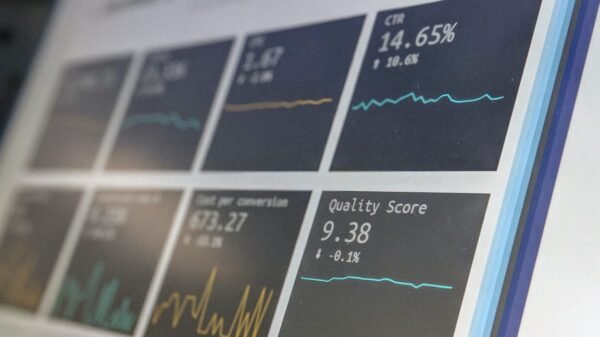Integration of AI-Driven Analytics: Transforming Business Intelligence
AI-driven analytics are revolutionizing business intelligence by providing deeper insights into customer behavior and market trends. With data playing a central role in decision-making, businesses are increasingly relying on artificial intelligence to process large datasets, predict future trends, and personalize customer experiences. This data-centric approach enhances efficiency, accuracy, and profitability across various industries.
The Role of AI in Modern Data Analytics
AI-driven analytics leverage machine learning and deep learning algorithms to process vast amounts of structured and unstructured data. These systems can identify patterns, detect anomalies, and generate insights in real time, allowing businesses to make data-backed decisions faster and more efficiently.
Enhancing Customer Insights Through AI Analytics
Understanding customer behavior is crucial for businesses, and AI-driven analytics enable companies to segment audiences based on purchasing habits, preferences, and engagement. By analyzing customer interactions across multiple channels, businesses can tailor marketing campaigns, recommend products, and improve user experiences.
Predictive Analytics for Market Trends and Demand Forecasting
AI-powered predictive analytics allow businesses to anticipate market trends and demand fluctuations. Retailers, manufacturers, and financial institutions use AI to forecast customer demand, optimize inventory, and adjust pricing strategies to maximize profits and minimize losses.
AI-Driven Personalization for Customer Engagement
Personalization has become a key differentiator in customer experience, and AI analytics play a significant role in delivering customized interactions. E-commerce platforms, streaming services, and digital marketing campaigns leverage AI to provide tailored recommendations, increasing customer satisfaction and retention.
Real-Time Data Processing for Faster Decision-Making
Traditional analytics methods require time-consuming data processing, but AI-driven analytics can analyze real-time data instantly. Businesses can use AI-powered dashboards and automation tools to react to market changes, customer feedback, and operational challenges in real time.
Fraud Detection and Risk Management Using AI Analytics
Financial institutions and e-commerce businesses are utilizing AI-driven analytics for fraud detection and risk management. AI algorithms analyze transaction patterns to identify suspicious activities, helping businesses prevent fraud, reduce chargebacks, and improve security measures.
Optimizing Supply Chain and Logistics with AI Analytics
AI-driven analytics enhance supply chain management by predicting delays, optimizing routes, and improving inventory management. Companies in logistics, transportation, and retail use AI to track shipments, reduce operational costs, and ensure timely deliveries.
AI-Powered Sentiment Analysis for Brand Reputation Management
AI sentiment analysis tools help businesses monitor customer feedback on social media, reviews, and surveys. By analyzing customer sentiments, brands can respond proactively to negative reviews, enhance customer relationships, and maintain a positive brand image.
Improving Employee Productivity and Workforce Analytics
AI analytics are not just for customers; they also play a role in workforce management. Businesses use AI to analyze employee performance, predict attrition rates, and optimize work schedules, leading to improved productivity and job satisfaction.
AI in Healthcare: Revolutionizing Diagnostics and Patient Care
The healthcare industry benefits from AI-driven analytics in diagnosing diseases, predicting outbreaks, and personalizing treatment plans. AI-powered analytics tools assist doctors in analyzing medical images, identifying patterns in patient history, and recommending evidence-based treatments.
Challenges in AI-Driven Analytics Implementation
Despite its benefits, AI-driven analytics come with challenges, such as data privacy concerns, high implementation costs, and the need for skilled professionals. Businesses must invest in ethical AI practices, secure data storage, and employee training to maximize AI’s potential.
AI and Automation: Reducing Manual Effort in Data Analysis
AI-powered automation reduces the need for manual data entry and analysis. AI-driven analytics platforms automate repetitive tasks, freeing employees to focus on strategic initiatives that drive business growth and innovation.
The Role of AI in Financial Decision-Making
Financial institutions use AI-driven analytics to assess investment risks, optimize trading strategies, and provide personalized banking services. AI-powered robo-advisors offer automated financial advice, making wealth management more accessible to a broader audience.
The Future of AI-Driven Analytics in Business Strategy
The future of AI-driven analytics will see further advancements in automation, deep learning, and AI-powered decision-making. As AI models become more sophisticated, businesses will rely on real-time data-driven insights to remain competitive in an evolving marketplace.
Harnessing AI Analytics for Competitive Advantage
In conclusion, the integration of AI-driven analytics is transforming how businesses operate, interact with customers, and make strategic decisions. By leveraging AI-powered insights, companies can enhance efficiency, improve personalization, and optimize operations. As AI continues to evolve, its role in business intelligence will become increasingly indispensable, enabling organizations to stay ahead in an increasingly data-driven world.


































